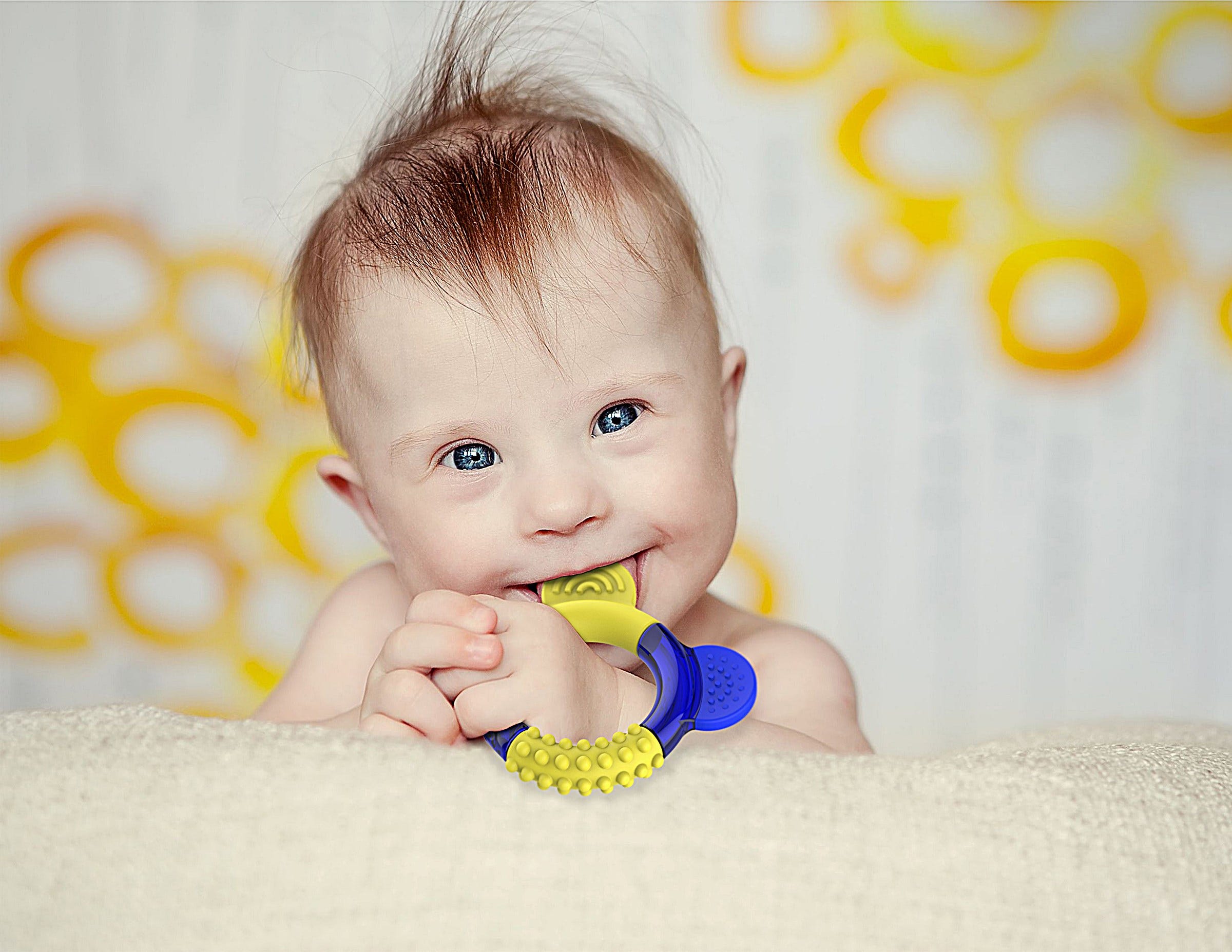Purdue Alum Designs, Patents Toy for Kids with Down Syndrome
 The teether positions the tongue for benefits specific to children the Down syndrome.
The teether positions the tongue for benefits specific to children the Down syndrome.
Subscriber Benefit
As a subscriber you can listen to articles at work, in the car, or while you work out. Subscribe NowHer older brother as her muse, recent Purdue University alumna Hannah Ferrill is hopeful children with Down syndrome will soon be playing with the toy she designed with them in mind. Ferrill, who is launching her career as a toy designer after earning her degree in industrial design last spring, created a unique teething ring for her senior thesis project. Now with a provisional patent, the toy is just one of “only good things” that have come from the short life of her brother, who died before his first birthday.
Jon was Ferrill’s oldest sibling, born with Down syndrome 30 years ago. Their mother recalls having to alter conventional baby items to meet Jon’s specific needs, such as low muscle tone, which she recalls made typical infant seats difficult to use.
“The needs of children with Down syndrome are very different than those with autism or any other special need; their needs are very specific to them,” says Ferrill. “How is it that, still, 30 years later, there aren’t any products for these children?”
The pesky question inspired her senior thesis project in 2019 to create an item specifically designed for children with Down syndrome. She created a teething ring that serves dual purposes: delights children with Down syndrome, but also helps strengthen their jaw and position their tongue for specific benefits.
“Because children with Down syndrome have low muscle tone, they usually have a protruding tongue,” says Ferrill. “I wanted something they could bite down on to get those muscles activated earlier. Getting their tongues and jaws activated is going to help them nurse, eat and speak earlier.”
The teething ring resembles a bear; it’s the shape of an “O” with two protruding teething pads that look like the bear’s ears.
“The shape of the ears is helping them push their tongue back in [when they bite down on it]. They can’t really chew on it without getting their tongue pressed down. The design was very intentional; that’s where you want them bite,” says Ferrill. “And there are little rewards to encourage them to keep doing it; the teether lights up, vibrates and plays music. Children with Down syndrome love stimuli like lights and sounds, whereas a lot of other children with special needs, like autism, don’t like all of these stimuli. I wanted to make something children with Down syndrome, specifically, are really excited about and get engaged with.”
Through her research and development of the toy, Ferrill noticed families in the Down syndrome community are often overwhelmed with the amount of therapy sessions that consume their daily lives, so she wanted to create something light-hearted that could perhaps reduce therapy time.
“Yes, it’s beneficial, but the main thing is, this is a toy. It’s something that’s going to help your child, while also being fun. It doesn’t have to be so serious,” says Ferrill. “[The parents] told me it’s not all about the needs; sometimes it’s about the fun. [Children with Down syndrome] love to laugh, they love music, they love to giggle and play.”
Ferrill is working with the Purdue Research Foundation Office of Technology Commercialization to bring the teether to market. She’s hopeful a company will license the design, so all families with babies who have Down syndrome can enjoy playing with a toy designed especially for them.
“When I finished it and I was able to show [parents] the product, they were just so excited that someone thought of them. I didn’t realize how happy they’d be about it, and it meant the world to me, because my heart is so invested in it. I want the best to come from it,” says Ferrill. “My mom has said over and over again that she knew my brother was born for a reason. It was such a difficult time for them, but it’s only been good things that have come from it.”
Ferrill describes her future goals for the teether.
After learning how much time families must commit to therapy, Ferrill says she aimed to make her toy beneficial in some way.
